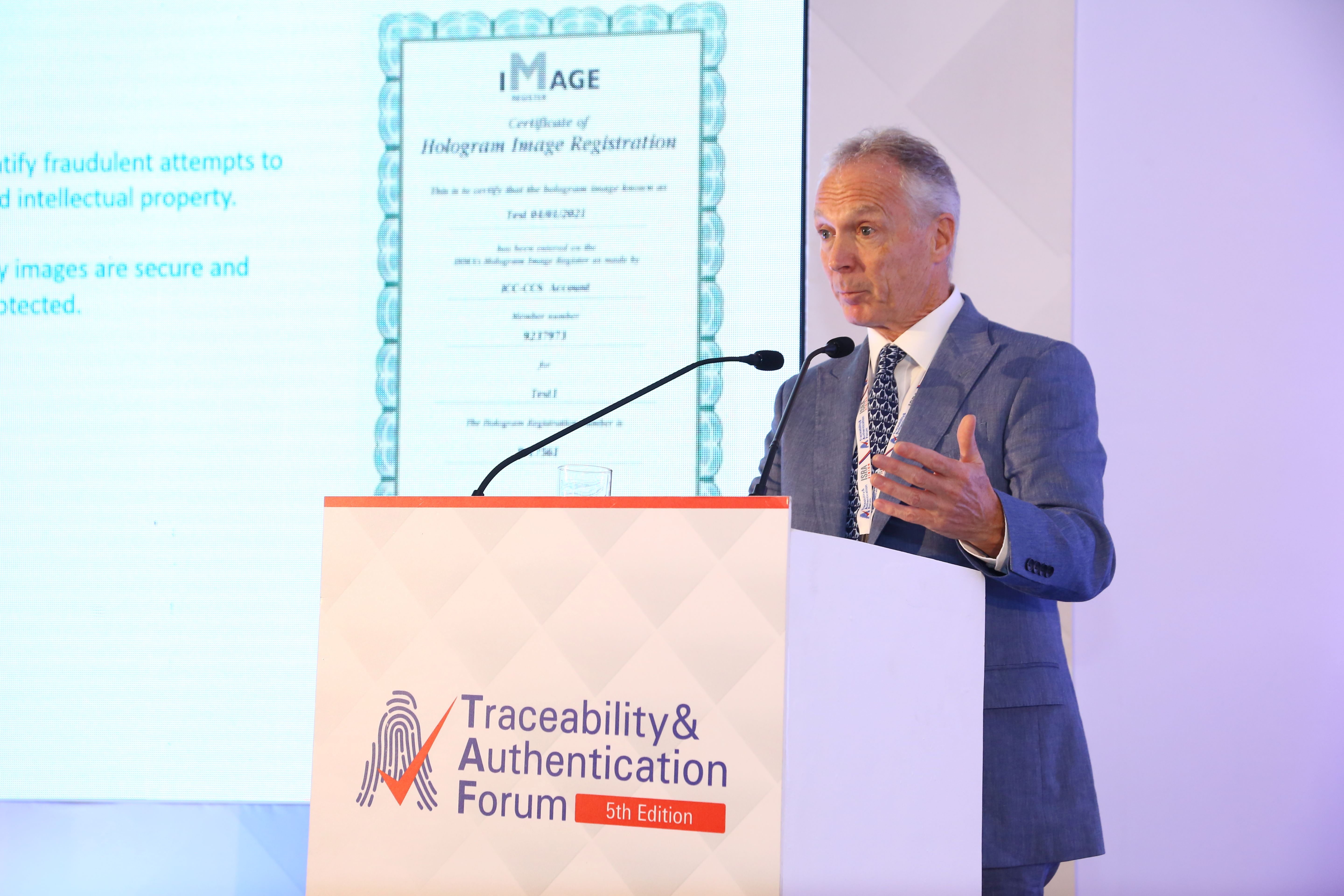



With their sights firmly set on a future with no counterfeiting in it, more than 150 delegates came together for the 5th edition of the Traceability and Authentication Forum (TAF), held on 6-7 July, in New Delhi, India.
Organised jointly by Authentication Solution Providers’ Association (ASPA) and Messe Frankfurt India, TAF (which was formerly known as The Authentication Forum until ASPA brought traceability into the mix) returned as an in-person event to encourage and nurture anti-counterfeiting ecosystems in the country.
Inaugurating the event were Dr Urvashi Prasad, Senior Director of Niti Aayog (the public policy think tank of the government of India), Susanta Singh, Joint Secretary of the Ministry of Chemicals and Fertilisers, and ASPA President, Nakul Pasricha.
The event kicked off with a panel discussion based on the findings of a recent consumer perception study by ASPA and CRISIL (an Indian analytical company). The study, called ‘State of Counterfeiting in India 2022’, revealed that counterfeiting constitutes an enormous 25-30% of the Indian market, and the panel discussion debated the question: why and how can we empower the consumer in identification and authentication?
This was followed by a presentation from solution providers Shriram Veritech and SICPA, who gave an overview of anti-counterfeiting technologies and best practices in adopting brand protection solutions.
After lunch, two exciting panel discussions took place on ‘Building a competitive anti-counterfeiting environment in India’, and ‘The role and way ahead for regulators in light of various traceability initiatives across the globe’.
The highlight of the day was launching the first edition of the U K Gupta Excellence Award. ASPA organised this in memory of its founding president, the late U K Gupta. Mr Gupta was instrumental in popularising the holographic industry in the Indian region and served on the board of the International Hologram Manufacturers Association (IHMA).
There were three categories of awards: innovation in physical authentication, innovation in digital authentication or traceability, and innovation in phygital authentication. The winners were Holostik in the first category, Sepio in the second, and Shriram Veritech in the third. And the runners-up for each category were Ennoventure, Holostik and Galileo Innovations, respectively.
Day 1 ended with a gala dinner and cocktails sponsored by Giriraj Foils.
Day 2 of the event started with a presentation by Dr Paul Dunn, Chairman of IHMA, on ‘The future for optical security and IHMA’. He shed light on the value IHMA provides to its members via its advocacy activities and knowledge services, including the Hologram Image Register, the Holography News® monthly newsletter, and the patents newsletter.
Paul also provided an overview of optical variable device (OVD) technologies and a patent analysis of advancements in material security (especially foils) in the last few years. He summarised how holograms/OVDs have become a source from which new technologies such as micro-mirrors, micro-lenses, and nanostructures have naturally evolved. He foresaw a future with opportunities for R&D teams and manufacturers to develop next-generation solutions from these emerging technologies.

Paul Dunn, Chairman, IHMA.
Another highlight of day 2 was a sector-specific, and timely, session on implementing barcode/QR codes on pharma products, in line with the Indian government’s new requirement for codes to be applied to the top 300 pharma brands from 1 August 2023 (see also ‘Pharma Traceability and Authentication in India’, ABN, May 2023).
The day ended with a session on understanding anti-counterfeiting, IPR, trademark protection, and litigation trends in India.
The conference was attended by a mix of delegates, with representatives from brand owners, consulting firms, authentication solution providers, industry associations, IPR professionals, regulators, policymakers, and consumer activists.
Let’s hope these different stakeholders can one day achieve their common goal of ZERO counterfeiting in India.